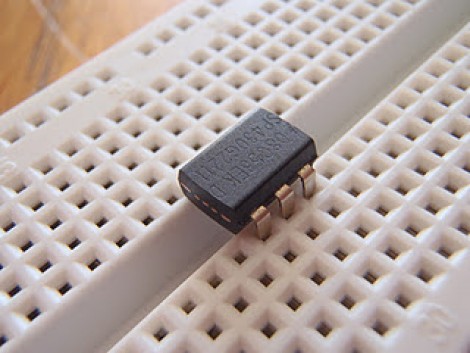
Check out this 6-pin MSP430 microcontroller. What’s that you say? TI doesn’t make a 6-pin MSP430? True, Texas Instruments doesn’t make one, so [Greg] grabbed his Demel and a cutoff wheel, and chopped up a larger uC to arrive at this package.
It may sound a bit crazy at first, but when you think about it there’s nothing really all that special about this. The plastic package on DIP components these days is mostly empty. The silicon die which does the computing is quite small in comparison, and usually mounted in the very center of the part. [Greg] simply cut off eight of the unneeded pins (four from each end).
Well, it might be a stretch to call them unneeded since he cut the ground and voltage pins. He gets around this issue by taking advantage of the same properties of the I/O pins used in this barebones RFID tag. You can inject power through the I/O and we’d bet you could easily use this chopped-up MSP430G2211 as an RFID tag if you wanted to.
[Thanks Ian]













